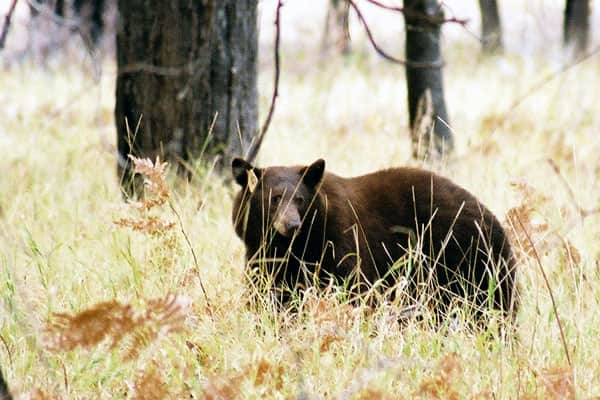Bear-proof Containers in Yosemite Change Bear Diets
OutdoorHub Reporters 03.07.14

Black bears in Yosemite National Park are eating less human food than they did 100 years ago, despite the much higher number of visitors today. According to livescience.com, research has shown that black bears in the park have lowered the amount of human food in their diets by as much as 63 percent. This change came about after park officials enacted new food storage rules and required bear-proof containers.
“What we found was that the diets of bears changed dramatically after 1999, when the park got funding to implement a proactive management strategy to keep human food off the landscape,” said lead study author Jack Hopkins. “This suggests that the bear’s diets are likely going back to their natural diet.”
Hopkins and his team published their findings in the March issue of the journal Frontiers in Ecology and the Environment. They found that between 2001 and 2007, only 13 percent of a Yosemite black bear’s diet came from human food. It is a startling change considering that between 1975 and 1985, the bears made up more than a third of their diet from food brought in by visitors.
The Los Angeles Times reported that park officials have tried different options to stop bears from eating human food in the past. In 1923, Yosemite employees began feeding bears from lighted platforms in an attempt to keep the animals off trails. Bears also found an unexpected food source in the park’s trout hatchery, which they occasionally raided for fish. Then in 1971 the park ended its feeding program, leading to a spike in bear activity. The opportunistic animals showed up at campgrounds and near buildings in search of food, which they usually found in dumpsters. Yosemite finally got funding to purchase bear-proof containers in 1999. Park rangers also patrolled Yosemite for problem bears, which were removed.
“Reducing the amount of food on the ground and making sure visitors are compliant with food storage has led to this management success,” Hopkins said. “It appears that management that is related to preventing bears from becoming too conditioned to food in the first place is one of the best things to put money into.”
The researchers analyzed bone and hair samples from the park’s bears, which were then compared to human hair samples. Their findings showed that in the last few decades bears gradually moved towards a more natural diet. This is good news for the park management, which have been working towards this goal for years.
Bears who actively search for human food are more likely to come into conflict with visitors or nearby residents. Since nuisance bears are usually destroyed, this can cut down on the average lifespan of Yosemite bears. Even seemingly inedible products such as toothpaste are tempting for bears, which have come to associate coolers and storage containers with an easy meal. Needless to say, this can prove to be a danger to humans.
Strict rules regarding what visitors can bring into the park and leave in their cars are credited for the change. Hopkins and his fellow researchers said the new study offers insight into how bear management plans can alter bear diets, which remain a problem for many places across the United States.
There are an estimated 300 to 500 black bears in Yosemite National Park.

